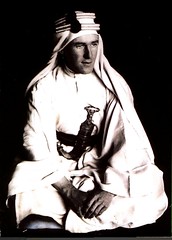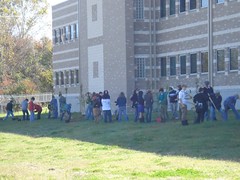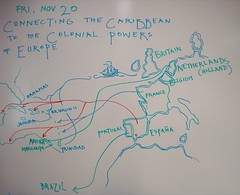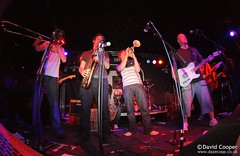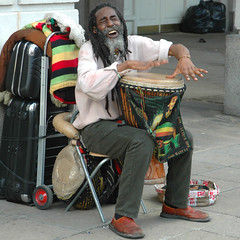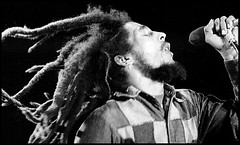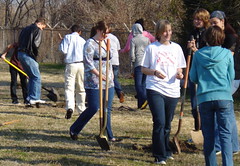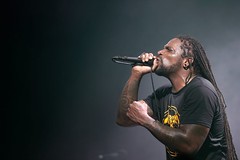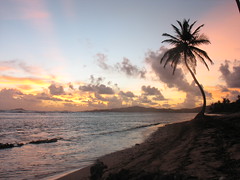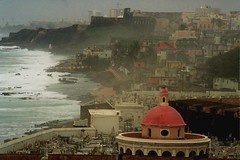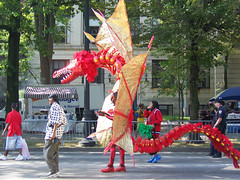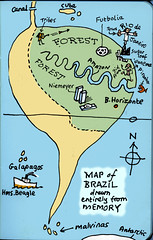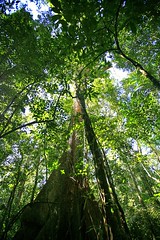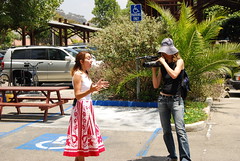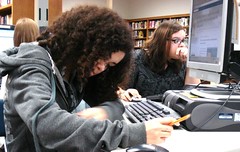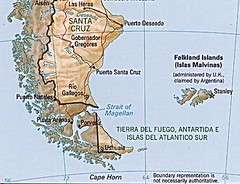The award-winning movie Lawrence of Arabia is based on Lawrence's chronicle of war and politics, the Seven Pillars of Wisdom.
1) British movie director David Lean won 7 Oscars for the movie, which runs over 200 minutes, or a good 2 hours. T / F
2) The movie opens in England, 1935. Motorcycles (Triumph, BSA, etc) were a symbol of British success in the Industrial Revolution. Enjoy the brief but loving camera attention given to Lawrence's British v-twin cycle, the Brough Superior. It was called "the Rolls Royce of motorcycles." In what nation is the Rolls Royce manufactured? a) France b) Germany c) England.
3) The Lawrence funeral service is in St. Paul’s Cathedral, London, a burial place reserved for national heroes. Remarks heard in the crowd indicate that L. was a complex fellow and not a perfect hero. T / F
4) Cairo, Cartography department, British Army, about 1914: in several ways L. stands out from the soldiers with which he is serving. a) articulacy b) ribaldry c) bestiality.
What is cartography? the making of a) menus b) posters c) maps.
5) What are the dates of WWI? Name the nations aligned with the British. Name the countries working with the Germans.
1914 - 1918; US enters war in 1917. Brits and French vs. Germans and Austria-Hungary.
6) Your dossier: a) portfolio b) genealogy c) association memberships.
7) What language has L. studied in addition to his mother tongue and French? a) Arabic b) German c) Chinese.
8) In Arabia there is a conflict between the nomadic, tribal Bedouin peoples and the Turks, rulers of the Turkish Ottoman Empire - which includes Arabia. Who’s on the German side? a) Bedouins b) Turks.
9) “The Officer’s Mess” is a term for
a) a carelessly kept meeting room or
b) the lounge area for the commissioned soldiers.
10) Arabian tribes are led by the wise, if weary,
a) Prince Feisal of Mecca b) Lloyd George c) Woodrow Wilson.
11) What is the attitude of L’s desert guide toward the British officer’s pistol carried by L.? a) curiosity b) extreme desire c) unconcern.
How does L. use the pistol in making his way amongst the Bedouins?
a) let's make a deal b) bribery c) bridge-building.
12) The Arabic word for canyon, usually a dry, rocky area between mesas, is “wadi.”
The wadi is where Arabs have typically made their settlements. T / F
What do the existence of these stone canyons say about the ancient geography of this region? a) centuries of wind erosion b) ancient waterways c) glaciation.
13) The Harish versus the Hazimi: murderous tribal warfare is a historic part of life in the vast desert. T / F
14) What kind of vessel is used to bring up water from the deep well in the desert? a) Goat skin b) wooden bucket c) woven-palm sort of basket-bucket.
15) Translate "Peace (be with you)” into Arabic: a) shalom b) salaam
c) shazam.
16) L. sings a WWI era ditty called “The Man who Broke the Bank at Monte Carlo.” Where is Monte Carlo? a) Mediterranean b) Persian Gulf c) North Sea. In gambling, what does it mean to “break the bank”?
17) A Britishism for being posted to a unit is “seconded.” T / F
18) What is meant by the term biplane? a) engine "blips" b) two wings
c) plane can be flown either right-side-up or upside-down.
19) Where did the Turks get airplanes in 1916? Not “at the store.” a) Germans b) French c) British.
20) What sound can Arabs seem not to be able to pronounce consistently? a) L
b) Y c) Ch.
21) In the caravan some camels are surmounted by small, square tent enclosures. Who is in such a tent? a) wives of the emir b) children of the royal family c) pet monkeys.
22) “Recite, then, as much of the __ as may be easy for you ... and seek ye the forgiveness of God. Verily, God is forgiving, merciful ...” These are the opening words of the a) Qu’ran b) Bible c) Baghavad Gita .
The scene in Feisel’s tent is unusually respectful of Muslims. Why do I say “unusually”? a) Western lack of respect for Muslims b) low Muslim self-concept c) camels ate all the dates.
23) Lawrence quotes the Qu'ran. How would he know such material?
a) movie producer explained it to him b) his momma c) his Oxford education.
24) In 1915 the top British priority in the Mid East was protection of a waterway important to their shipping and movement of warships. What is the name of this key passage, which connects the Mediterranean to the Indian Ocean? a) Arabian Sea b) Panama Canal c) Suez Canal.
25) In explaining to Feisel the reason for Britain’s worldwide power, the British officer puts an emphasis on England's __ . a) technology b) discipline c) skill d) wealth.
26) In the early 1900’s the city at the center of Islamic art, business and scholarship was not Mecca, nor Cairo. It was the capital of Syria:
a) Medina b) Damascus c) Jerusalem .
27) According to Feisel, do Arabs love the desert? No. Then what do they love? a) fountains and gardens b) mountains c) ships and oysters.
28) Feisel refers to the Islamic golden age. About what centuries did the peak of their achievements occur? a) 750 to 1050 b) 1400 - 1500 c) 1800 - 1900.
29) At the desert’s edge Lawrence spends a night concentrating on the Arab dilemma in their feckless fight against the Turks. He has a breakthrough. What is his solution? a) attack from the sea
b) attack at night c) attack from the desert.
30) A cruel and terrible desert must be crossed by the Bedouin.
The desert is the a. Sahara b. Rub al Kali c. Arezy an Nefud.
31) “The Howeitat are brigands.” Write a synonym for brigand.
a) gourmets b) swift of movement c) bandits.
32) What 3 nations has Lawrence visited thus far in the movie? a) England, Egypt, Syria b) England, France, Egypt c) England, Egypt, Saudi Arabia.
33) Can a man claiming to perform a miracle be judged guilty of blasphemy? By definition, miracles are created by __. a) God b) Moses c) Abraham.
34) The boys who become Lawrence’s servants are unsuitable, he is told, because they are “outcast and parentless.” What would we call them? a) bastards b) idiots c) dispossessed.
35) What is a shilling? a) currency b) to sell something via lies and trickery c) a pint of ale.
36) “Allah favors the compassionate.” Offer a synonym for compassionate. a) healthy b) benevolent c) all-knowing.
37) During the desert crossing, Lawrence makes a point of using the precious water for shaving. Why does he insist on shaving?
a) code of the British officer b) OCD c) his beard is patchy and unappealing.
38) Which character has 2 African bodyguards? a) Lawrence
b) Sherif Ali c) General Dryden.
39) "In sh’Allah" is a frequent interjection and means: a) "If God is willing" b) "God be with you" c) "I believe in God" d) "God is merciful."
40) Gasim the Bedouin falls off his camel and is lost in the desert during the night. a) Lawrence stubbornly insists on going back to try to find him b) Lawrence accepts that being lost is Gasim's fate
c) Lawrence is unable to decide on the best course of action and talks about what might be done for days and days.
41) In the desert the Bedouins find a place surrounded by trees where their camels can drink. It is called an __ . a) aquifer b) fountain
c) oasis.
What kind of trees are those? a) cocoanut palms b) date palms c) oasis palms .
42) An argument about the role of fate is waged between Lawrence and the Arabs.
The Englishman’s key phrase is “Nothing is __.” a) written b) known
c) seen before dawn.
43) Lawrence’s father, he explains, is Sir Thomas Chapman.
Yet his father and mother are a) not married b) not suited c) illiterate.
44) Lawrence is awarded the robes of a tribesman for his valorous service. Somehow, he finds the indigenous garments a) uncomfortable
b) appealing c) murderous.
45) After some tricky negotiations, Auda Abu Talib of the Howeitat says “Dine with me in __ Ruum!” a) Wadi b) Musa c) Caribbean.
46) The camel driver’s stick is often used for another purpose.
a) mini tent pole b) back scratcher c) cleaning boots.
47) Auda Abu Talib says, “’The Arabs,’ What tribe is that?” What does he imply? a) there is no unity among the Arab tribes b) he is hard of hearing c) there is not enough money on the table.
48) What is a British guinea? a) small pig b) hen c) currency.
49) What city will be attacked by the combined tribes in a surprise raid?
a) Cairo b) Medina c) Aqaba.
It lies on what body of water? a) Gulf of Aqaba b) Gulf of Suez
c) Gulf of Aden.
50) When the troops leave the wadi, the women watching them emit a high-pitched scream as encouragement. What is that called? a. ovulation b. ululation c. trepidation d. insubordination.
51) “The law says the man must die.” This is based on a code associated with a historic leader of Mesopotamia. a) Cyrus b) Hammurabi c) Darius.
52) In the tribal dispute - which almost begins a blood feud - who is the condemned murderer? Who is the executioner? What irony is there?
53) The Turks at Aqaba outnumber and outgun the Arabs but the Bedouin raiders are successful. What is their great advantage?
54) Lawrence declares he will cross the badlands of the Sinai Peninsula. Where is he going?
55) The servant boy Daud dies in the desert in a most unexpected way. What is it?
56) When a camel lies down, which set of legs folds first?
57) The spooky, abandoned buildings encountered on the edge of the Sinai actually lie beside the __ __ .
58) “Bringing a ‘wog’ into the Officer’s Mess” is offensive to many soldiers. Explain.
59) “Undisciplined, unpunctual, untidy; knowledge of languages, music, literature, etc.” Who is being described?
60) In WWI the British attacked the Turkish-held Mid East and drove the Turks from the holy city of __.
61) “You acted without orders.”
“Shouldn’t an officer use their initiative at all times?” Explain.
62) Lawrence leads Bedouin riders in swift attacks on the Turks that depend on surprise for success. Today that’s called __ warfare (French word).
63) The Bedouins are wary of being partners with the British. They believe that the British are thinking, “Let the Arabs drive out the Turks, then we’ll take over.”
T / F
64) Intermission is another opportunity for the director to air his score over a dark screen. What does this imply?
65) The American reporter called Bentley in the movie is another true element in the Lawrence story. The journalist’s real name is Lowell Thomas. What happens as a result of Bentley’s stories and photos?
66) Lawrence uses his expertise in explosives against the Turkish __.
67) What is the Geneva Convention? a) guidelines for humane treatment of prisoners during war. b) a secret system used by the people of Switzerland.
68) What happens to the Bedouin army after the looting of Turkish trains?
69) Why does Lawrence shoot and kill his servant and friend Farraj?
70) Lawrence allows himself to be captured by the Turks in Deraa. Why?
71) Is there such a thing as a fair-haired, blue-eyed person of Middle Eastern blood?
Is a Circassian the same as a Caucasian?
72) Write a brief description of the location of the Caucasian Mountains.
73) On the eve of the battle for Jerusalem Lawrence has a breakdown. What action does he take?
74) The Sykes-Picot Treaty is an agreement at the end of WWI that proclaims that 2 nations will divide the control of the Middle East. Which European nations took over the defeated Turkish Empire?
75) Is Lawrence guilty of having told the Bedouins “half lies” about their future and control of their ancient lands? Was he guilty of naiveté?
76) What happened to Lawrence while being held by the Turks in Deraa?
77) On the eve of the attack on the Turks in Damascus, people notice that Lawrence is a changed man. Describe his attitude.
78) Lawrence’s personal troops are hired soldiers. The word for commercial soldiers is __.
79) General Allenby is chauffeured in what brand of British auto?
80) Who wins the race to conquer the Turks in Damascus? a) the Arabs b) the British.
81) The tribal people form a government in Damascus. It is called the __ National Council.
82) The Arab armies prove incapable of governing Damascus. What governance factors flummox the Arabs?
83) The Arab tribal leaders leave Damascus and return to their homes in __.
84) What factor in British life is repulsive to Lawrence in his return to Britain?
85) Lawrence did not want to be famous as a successful soldier. His desire was to be recognized as a significant writer. Did he reach his goal?
86) At what age does Lawrence die?
Monday, November 30, 2009
Tuesday, November 24, 2009
Enriched geography requirements: one book per semester and a social studies project
Enriched geography has additional requirements: reading one book per semester and development of social studies project
Due Nov 30: Social Studies Fair project in Powerpoint-display form. Magnet SS Fair will be Dec 4.
Book reports due Dec 14.
Value of the Book Report: 25 pts., Soc Studies Project: 25 pts.
Students have a handout that needs a parent signature __ .
1) Reading and reporting upon one book - in each semester.
* choose a book based on your interests (ex.: soccer, dance, horses).
* book to be approved by your teacher
* Books for which a movie has been made will not be allowed.
* topic related to our study of Europe in first semester; related to Asia in 2nd semester.
* approximately 200 pages (teacher discretion)
* report will comprise 2 parts -
a) Graphic Book Report - Powerpoint style - that illustrates the region and issues addressed by your book. 8 images, each augmented with 3 bulleted items of explanation. Title. Bibliography. 15 pts.
b) Book Essay in which 3 incidents in the book are briefly described and explained in the context of one of the book's themes. 10 pts.
c) both will be submitted vis GoogleDocs.
Social Studies Fair Project -
* submitted via image-based report (Powerpoint-style) in GoogleDocs.
* purpose is to show fluency with the Scientific Method.
* student articulates . . .
- social problem
- hypothesis for solution to problem
- review of literature (find sources, read the articles and choose the part(s) that are relevant to your paper) that addresses the problem. The list of all articles read becomes your bibliography.
- conclusion drawn from literature review.
- bibliography.
- abstract, or half-page summary of entire project.
- cancelled: evaluation of one's own project - strengths, areas that needed improvement.
- grammar, spelling and construction.
- student need not build traditional backboard display unless teacher and student agree on an entry into the social studies fair.
- students may work solo, in a duo or a 3-person team. And, yes, there will be bonus points for those who can devise an international team.
Due Nov 30: Social Studies Fair project in Powerpoint-display form. Magnet SS Fair will be Dec 4.
Book reports due Dec 14.
Value of the Book Report: 25 pts., Soc Studies Project: 25 pts.
Students have a handout that needs a parent signature __ .
1) Reading and reporting upon one book - in each semester.
* choose a book based on your interests (ex.: soccer, dance, horses).
* book to be approved by your teacher
* Books for which a movie has been made will not be allowed.
* topic related to our study of Europe in first semester; related to Asia in 2nd semester.
* approximately 200 pages (teacher discretion)
* report will comprise 2 parts -
a) Graphic Book Report - Powerpoint style - that illustrates the region and issues addressed by your book. 8 images, each augmented with 3 bulleted items of explanation. Title. Bibliography. 15 pts.
b) Book Essay in which 3 incidents in the book are briefly described and explained in the context of one of the book's themes. 10 pts.
c) both will be submitted vis GoogleDocs.
Social Studies Fair Project -
* submitted via image-based report (Powerpoint-style) in GoogleDocs.
* purpose is to show fluency with the Scientific Method.
* student articulates . . .
- social problem
- hypothesis for solution to problem
- review of literature (find sources, read the articles and choose the part(s) that are relevant to your paper) that addresses the problem. The list of all articles read becomes your bibliography.
- conclusion drawn from literature review.
- bibliography.
- abstract, or half-page summary of entire project.
- cancelled: evaluation of one's own project - strengths, areas that needed improvement.
- grammar, spelling and construction.
- student need not build traditional backboard display unless teacher and student agree on an entry into the social studies fair.
- students may work solo, in a duo or a 3-person team. And, yes, there will be bonus points for those who can devise an international team.
Saturday, November 21, 2009
European connections to the Caribbean
Happy holidays.
Next week I'll post updates on the ss project. There will be a model project online, too.
Next week I'll post updates on the ss project. There will be a model project online, too.
Friday, November 20, 2009
Magnet 2013 Crepe Myrtle Planting successful: 30 trees added to campus
Over 300 Magnet students wielded shovels to dig, chop and backfill holes in which they planted crepe myrtles on Green Thurs, said teacher Robert Trudeau. It was a self-funded project of the Class of 2013. Some 30 trees were added to the campus.
About 42 shovels were loaned by parents to the students. Hopefully the students will take those shovels home today.
Thanks, parents.
About 42 shovels were loaned by parents to the students. Hopefully the students will take those shovels home today.
Thanks, parents.
Tuesday, November 17, 2009
Jamaicans created rock steady and ska as well as reggae
Reggae is a music genre first developed in Jamaica in the late 1960s, says Wikipedia.
After World War II, Jamaicans purchased radios in increasing numbers and were able to hear rhythm and blues music from Southern United States cities such as New Orleans by artists such as Fats Domino[10] and Louis Jordan.[11] The stationing of American military forces during and after the war meant that Jamaicans could listen to military broadcasts of American music, and there was a constant influx of records from the US.
Reggae denotes a particular music style that originated following on the development of ska and rocksteady. Reggae is based on a rhythmic style characterized by accents on the off-beat, known as the skank. Reggae is normally slower than ska but faster than rocksteady.
It was strongly influenced by traditional African and Caribbean music, as well as by American rhythm and blues.
Ska combined elements of Caribbean mento and calypso with American jazz and rhythm and blues. It is characterized by a walking bass line accented with rhythms on the upbeat.
In the early 1960s, ska was the dominant music genre of Jamaica and was popular with British Mods. Later it became popular with many skinheads.[2][3][4][5] Music historians typically divide the history of ska into three periods: the original Jamaican scene of the 1960s (First Wave), the English 2 Tone ska revival of the late 1970s (Second Wave) and the third wave ska movement, which started in the 1980s (Third Wave).
After World War II, Jamaicans purchased radios in increasing numbers and were able to hear rhythm and blues music from Southern United States cities such as New Orleans by artists such as Fats Domino[10] and Louis Jordan.[11] The stationing of American military forces during and after the war meant that Jamaicans could listen to military broadcasts of American music, and there was a constant influx of records from the US.
Reggae denotes a particular music style that originated following on the development of ska and rocksteady. Reggae is based on a rhythmic style characterized by accents on the off-beat, known as the skank. Reggae is normally slower than ska but faster than rocksteady.
It was strongly influenced by traditional African and Caribbean music, as well as by American rhythm and blues.
Ska combined elements of Caribbean mento and calypso with American jazz and rhythm and blues. It is characterized by a walking bass line accented with rhythms on the upbeat.
In the early 1960s, ska was the dominant music genre of Jamaica and was popular with British Mods. Later it became popular with many skinheads.[2][3][4][5] Music historians typically divide the history of ska into three periods: the original Jamaican scene of the 1960s (First Wave), the English 2 Tone ska revival of the late 1970s (Second Wave) and the third wave ska movement, which started in the 1980s (Third Wave).
Rastafarians: a recent religious group born in Jamaica
Characteristics of the Rasta religion -
- Abrahamic (as is Judaism, Islamd and Chrisitanity)
- vegetarian
- Afrocentric
- Ethiopian pride
- all things "natural"
- slow and spiritual-minded lifestyle
- Zion: spiritual home
- Babylon: place of corruption through materialism
- Ganja: cannabis is seen as a sacrament, used in healing and in enhancing spirituality.
- Abrahamic (as is Judaism, Islamd and Chrisitanity)
- vegetarian
- Afrocentric
- Ethiopian pride
- all things "natural"
- slow and spiritual-minded lifestyle
- Zion: spiritual home
- Babylon: place of corruption through materialism
- Ganja: cannabis is seen as a sacrament, used in healing and in enhancing spirituality.
Jamaican singer-songwriter Bob Marley, 1945 - 1981
Bob Marley remains the most widely known performer of reggae music, and is credited for helping spread both Jamaican music and the Rastafari movement to a worldwide audience.[1]He sold some 20 million records, says Wikipedia.
Marley's best known hits include "I Shot the Sheriff", "No Woman, No Cry", "Could You Be Loved", "Stir It Up", "Jamming", "Redemption Song" and "One Love."
His father, Norval Sinclair Marley, was a caucasian-Jamaican of English descent, whose family came from Essex, England. Norval was a captain in the Royal Marines, as well as a plantation overseer, when he married Cedella Booker, an Afro-Jamaican then 18 years old.
Notable attributes:
Dreadlocks, also called locks or dreads, are heavy matted coils of hair which form by themselves eventually fusing together to form a single dread. This is possible in all hair types if the hair is allowed to grow naturally without grooming or conditioning for a long period of time.
Dreadlocks are associated most closely with the recent Rastafari movement, but people from many groups in history before them have worn dreadlocks, including the Hindu Shiva worshippers of India, historic European peoples,[vague] and the Sufis of Pakistan.
Marley died at age 36 of cancer stemming from an untreated melanoma.
Marley's best known hits include "I Shot the Sheriff", "No Woman, No Cry", "Could You Be Loved", "Stir It Up", "Jamming", "Redemption Song" and "One Love."
His father, Norval Sinclair Marley, was a caucasian-Jamaican of English descent, whose family came from Essex, England. Norval was a captain in the Royal Marines, as well as a plantation overseer, when he married Cedella Booker, an Afro-Jamaican then 18 years old.
Notable attributes:
Dreadlocks, also called locks or dreads, are heavy matted coils of hair which form by themselves eventually fusing together to form a single dread. This is possible in all hair types if the hair is allowed to grow naturally without grooming or conditioning for a long period of time.
Dreadlocks are associated most closely with the recent Rastafari movement, but people from many groups in history before them have worn dreadlocks, including the Hindu Shiva worshippers of India, historic European peoples,[vague] and the Sufis of Pakistan.
Marley died at age 36 of cancer stemming from an untreated melanoma.
Monday, November 16, 2009
Roda de Capoeira: an Afro-Brazilian dance/sport that is spreading across the world
Capoeira is a Brazilian art form that ritualizes movement from martial arts, games, and dance, says Wikipedia.
It was created in Brazil some time after the 16th century in the regions known as Bahia, Pernambuco, Rio de Janeiro, Minas Gerais, and São Paulo.
Participants form a roda or circle and take turns either playing musical instruments (such as the Berimbau), singing, or ritually sparring in pairs in the center of the circle.
The game is marked by fluid acrobatic play, feints, and extensive use of groundwork, including sweeps, kicks, and headbutts. Less frequently used techniques include elbow-strikes, slaps, punches, and body throws.
Its origins and purpose are a matter of heated debate, with the spectrum of argument ranging from views of Capoeira as a uniquely Brazilian folk dance to claims that it is a battle-ready fighting form directly descended from ancient African technique.
It was created in Brazil some time after the 16th century in the regions known as Bahia, Pernambuco, Rio de Janeiro, Minas Gerais, and São Paulo.
Participants form a roda or circle and take turns either playing musical instruments (such as the Berimbau), singing, or ritually sparring in pairs in the center of the circle.
The game is marked by fluid acrobatic play, feints, and extensive use of groundwork, including sweeps, kicks, and headbutts. Less frequently used techniques include elbow-strikes, slaps, punches, and body throws.
Its origins and purpose are a matter of heated debate, with the spectrum of argument ranging from views of Capoeira as a uniquely Brazilian folk dance to claims that it is a battle-ready fighting form directly descended from ancient African technique.
Tues: bring shovels; Thurs: crepe myrtle planting day
I'm calling it Green Thursday: social studies students will plant some 30 crepe myrtles at the base of E Wing.
Tasks -
- shoveling a large hole for each plant
- breaking up clods
- surrounding the new plant with loose soil
- adding mulch and water
- backfilling and leveling
- straightening the area and cleaning shovels
- touring the previous plantings on the perimeter of the north field
Tasks -
- shoveling a large hole for each plant
- breaking up clods
- surrounding the new plant with loose soil
- adding mulch and water
- backfilling and leveling
- straightening the area and cleaning shovels
- touring the previous plantings on the perimeter of the north field
Wed, Nov 18: Caribbean map & open notes quiz
Carib map:
- Sketch from the Yucatan to Venezuela
- 10 items as studied in class
Open notes: Central and South America
- Sketch from the Yucatan to Venezuela
- 10 items as studied in class
Open notes: Central and South America
Thursday, November 12, 2009
One of Brazil's many rock bands, Sepultura has sold 15 million records
Sepultura (Portuguese for "tomb" or "grave"[1]) is a heavy metal band from Belo Horizonte, Brazil, formed in 1984, says Wikipedia.[2]
The band was a major force in the death metal and thrash metal realms during the late 1980s and early 1990s,[3] and their later experiments melding hardcore punk, industrial music, and nu metal[4] with extreme metal[5][6] provided a blueprint for the groove metal genre.[7]
Sepultura have released eleven studio albums so far, the latest being A-Lex (2009). Their most successful records are Arise (1991),[8] Chaos A.D. (1993), and Roots (1996),[9] each of them having surpassed the one million mark worldwide.
Sepultura has sold over 15 million units worldwide,[10] gaining multiple gold and platinum records across the globe, including in countries as diverse as France,[11][12] Australia,[13] Indonesia,[14] United States,[15] Cyprus,[16] and their native Brazil.[17]
The band was a major force in the death metal and thrash metal realms during the late 1980s and early 1990s,[3] and their later experiments melding hardcore punk, industrial music, and nu metal[4] with extreme metal[5][6] provided a blueprint for the groove metal genre.[7]
Sepultura have released eleven studio albums so far, the latest being A-Lex (2009). Their most successful records are Arise (1991),[8] Chaos A.D. (1993), and Roots (1996),[9] each of them having surpassed the one million mark worldwide.
Sepultura has sold over 15 million units worldwide,[10] gaining multiple gold and platinum records across the globe, including in countries as diverse as France,[11][12] Australia,[13] Indonesia,[14] United States,[15] Cyprus,[16] and their native Brazil.[17]
Wednesday, November 11, 2009
US has held an embargo against Cuba for 47 years - in attempt to economically punish the nation
UNITED NATIONS (AP) — The U.N. General Assembly has voted overwhelmingly to condemn the 47-year U.S. trade embargo on Cuba, an annual ritual that highlights near unanimous global opposition to America's hard-line stance toward the communist island.
It is the 19th time in a row that the world body adopted the symbolic measure, and the first since U.S. President Barack Obama took office in January. Many representatives to the world body expressed hope the new American administration will work to normalize relations with its longtime enemy.
But Wednesday's 187-3 vote, with two abstentions, was unlikely to sway Washington, which has loosened financial and travel restrictions on Americans with relatives on the island but has said it would not lift the embargo until Cuba accept some political, economic and social changes.
Thanks to student Bregon Webb for the link!
It is the 19th time in a row that the world body adopted the symbolic measure, and the first since U.S. President Barack Obama took office in January. Many representatives to the world body expressed hope the new American administration will work to normalize relations with its longtime enemy.
But Wednesday's 187-3 vote, with two abstentions, was unlikely to sway Washington, which has loosened financial and travel restrictions on Americans with relatives on the island but has said it would not lift the embargo until Cuba accept some political, economic and social changes.
Thanks to student Bregon Webb for the link!
Map quiz: sketch and identify continents, nations and bodies of water surrounding the Atlantic
Thurs map quiz, Nov 12: sketch and identify (10 items) 4 continents (N Amer, S Amer, Europe, Africa) and 6 additional nations and bodies of water surrounding the Atlantic. Please see the illustration as a guide.
Also: open notes quiz on the Caribbean and South America.
Also: open notes quiz on the Caribbean and South America.
Tuesday, November 10, 2009
Once Upon A Mattress: a comedy from Magnet Drama at 6:30 pm on Wed, Th and Fri
Bonus Points for attending the Drama Dept comedy Once Upon a Mattress at 6: 30 in the PAC on Wed, Th or Fri night.
Parents welcome, too!
Parents welcome, too!
Comparing Caribbean Islands to archipelagos on other continents
Two-student teams. Please change to a partner with whom you have yet to work.
Two days in lab. Complete project as homework.
Please use GoogleDocs in a shared mode.
Compare one Caribbean island to one island in an entirely different part of the world. Like, Malta or Tasmania!
- 9 slides.
- Titles! Over an image.
- Image on each slide.
- Improved citations. Wikipedia.org/Trinidad/cuisine.
- Sources cited on each slide.
- 3 edited - bulleted - info points on each slide.
- 2 maps
- reports delivered in class on Th and Fri.
- 12 pts.
- Include
demographics
language
ethnicities
history
cuisine
sports
music
Two days in lab. Complete project as homework.
Please use GoogleDocs in a shared mode.
Compare one Caribbean island to one island in an entirely different part of the world. Like, Malta or Tasmania!
- 9 slides.
- Titles! Over an image.
- Image on each slide.
- Improved citations. Wikipedia.org/Trinidad/cuisine.
- Sources cited on each slide.
- 3 edited - bulleted - info points on each slide.
- 2 maps
- reports delivered in class on Th and Fri.
- 12 pts.
- Include
demographics
language
ethnicities
history
cuisine
sports
music
Monday, November 09, 2009
St. Croix, the US Virgin Islands
The Virgin Islands are an archipelago, part of the Leeward Islands in the Caribbean Sea, says Wikipedia.
The Virgin Islands are divided into two political entities; on the east, Tortola and some 50 additional islands are a territory of the United Kingdom; and in the west, St. Croix, St. John, St. Thomas are governed as a territory of the United States.
Christopher Columbus named the islands Santa Ursula y las Once Mil Vírgenes, shortened to Las Vírgenes, after Saint Ursula and her 11,000 virgins.
They were inhabited by the Arawak, Carib and Cermic, all of whom died out during the colonial period from disease, harsh labor conditions, and murder.
Later, the islands were re-populated by European plantation owners, and enslaved Africans who worked on sugar plantations, and at least one tobacco plantation.
The sugar plantations are gone, but the descendants of the enslaved Africans remain the bulk of the population, sharing a common Afro-Caribbean heritage with the rest of the English-speaking Caribbean.
The Virgin Islands are divided into two political entities; on the east, Tortola and some 50 additional islands are a territory of the United Kingdom; and in the west, St. Croix, St. John, St. Thomas are governed as a territory of the United States.
Christopher Columbus named the islands Santa Ursula y las Once Mil Vírgenes, shortened to Las Vírgenes, after Saint Ursula and her 11,000 virgins.
They were inhabited by the Arawak, Carib and Cermic, all of whom died out during the colonial period from disease, harsh labor conditions, and murder.
Later, the islands were re-populated by European plantation owners, and enslaved Africans who worked on sugar plantations, and at least one tobacco plantation.
The sugar plantations are gone, but the descendants of the enslaved Africans remain the bulk of the population, sharing a common Afro-Caribbean heritage with the rest of the English-speaking Caribbean.
San Juan, capital of the Commonwealth of Puerto Rico
Puerto Rico, officially the Commonwealth of Puerto Rico (Spanish: Estado Libre Asociado de Puerto Rico), is a self-governing unincorporated territory of the United States located in the northeastern Caribbean, east of the Dominican Republic and west of the Virgin Islands.
Puerto Rico, says Wikipedia, is composed of an archipelago that includes the main island of Puerto Rico and a number of smaller islands. The main island of Puerto Rico is the smallest by land area and second smallest by population among the four Greater Antilles, which also include Cuba, Hispaniola, and Jamaica.
Puerto Ricans often call the island Borinquen, from Borikén, its indigenous Taíno name.[4][5] The terms boricua and borincano are commonly used to identify someone of Puerto Rican heritage. The island is also popularly known as "La Isla del Encanto", which translated means "The Island of Enchantment."
Puerto Rican culture is a mix of four cultures, African (from the slaves), Taíno (Amerindians), Spanish, and more recently, North American. From Africans, the Puerto Ricans have obtained the "bomba and plena", a type of music and dance including percussions and maracas. From the Amerindians (Taínos), they kept many names for their municipalities, foods, musical instruments like the güiro and maracas. From the Spanish they received the Spanish language, the Catholic religion and the vast majority of their cultural and moral values and traditions. From the United States they received the English language, the university system and the adoption of some holidays and practices.
As of 2003, the U.S. Census Bureau estimates that more people of Puerto Rican birth or ancestry live in the U.S. than in Puerto Rico.[97]
Tourism is an important component of Puerto Rican economy supplying an approximate $1.8 billion. In 1999, an estimated 5 million tourists visited the island, most from the U.S. Nearly a third of these are cruise ship passengers. A steady increase in hotel registrations since 1998 and the construction of new hotels and new tourism projects, such as the Puerto Rico Convention Center, indicate the current strength of the tourism industry.
Puerto Ricans had median household income of $17,741 for 2007, which makes Puerto Rico's economy comparable to the independent nations of Latvia or Poland.[100] By comparison, the poorest state of the Union, Mississippi, had median household income of $36,338 in 2007.[100]
Puerto Rico, says Wikipedia, is composed of an archipelago that includes the main island of Puerto Rico and a number of smaller islands. The main island of Puerto Rico is the smallest by land area and second smallest by population among the four Greater Antilles, which also include Cuba, Hispaniola, and Jamaica.
Puerto Ricans often call the island Borinquen, from Borikén, its indigenous Taíno name.[4][5] The terms boricua and borincano are commonly used to identify someone of Puerto Rican heritage. The island is also popularly known as "La Isla del Encanto", which translated means "The Island of Enchantment."
Puerto Rican culture is a mix of four cultures, African (from the slaves), Taíno (Amerindians), Spanish, and more recently, North American. From Africans, the Puerto Ricans have obtained the "bomba and plena", a type of music and dance including percussions and maracas. From the Amerindians (Taínos), they kept many names for their municipalities, foods, musical instruments like the güiro and maracas. From the Spanish they received the Spanish language, the Catholic religion and the vast majority of their cultural and moral values and traditions. From the United States they received the English language, the university system and the adoption of some holidays and practices.
As of 2003, the U.S. Census Bureau estimates that more people of Puerto Rican birth or ancestry live in the U.S. than in Puerto Rico.[97]
Tourism is an important component of Puerto Rican economy supplying an approximate $1.8 billion. In 1999, an estimated 5 million tourists visited the island, most from the U.S. Nearly a third of these are cruise ship passengers. A steady increase in hotel registrations since 1998 and the construction of new hotels and new tourism projects, such as the Puerto Rico Convention Center, indicate the current strength of the tourism industry.
Puerto Ricans had median household income of $17,741 for 2007, which makes Puerto Rico's economy comparable to the independent nations of Latvia or Poland.[100] By comparison, the poorest state of the Union, Mississippi, had median household income of $36,338 in 2007.[100]
Friday, November 06, 2009
American mogul Bill Gates, "world's wealthiest man," is now a philanthropist
William Henry "Bill" Gates III (born October 28, 1955)[2] is an American business magnate, philanthropist, and chairman[3] of Microsoft, the software company he founded with Paul Allen. He is ranked consistently one of the world's wealthiest people[4] and the wealthiest overall as of 2009, says Wikipedia.[1]
During his career at Microsoft, Gates held the positions of CEO and chief software architect, and remains the largest individual shareholder with more than 8 percent of the common stock.[5] He has also authored or co-authored several books.
Gates is one of the best-known entrepreneurs of the personal computer revolution. Although he is admired by many, a number of industry insiders criticize his business tactics, which they consider anti-competitive, an opinion which has in some cases been upheld by the courts (see Criticism of Microsoft).[6][7] In the later stages of his career, Gates has pursued a number of philanthropic endeavors, donating large amounts of money to various charitable organizations and scientific research programs through the Bill & Melinda Gates Foundation, established in 2000.
Bill Gates stepped down as chief executive officer of Microsoft in January, 2000. He remained as chairman and created the position of chief software architect.
Microsoft Corporation is a multinational computer technology corporation that develops, manufactures, licenses, and supports a wide range of software products for computing devices.[8]
Headquartered in Redmond, Washington, USA, (a suburb of Seattle) its most profitable products are the Microsoft Windows operating system and Microsoft Office (Word, Powerpoint, etc).
During his career at Microsoft, Gates held the positions of CEO and chief software architect, and remains the largest individual shareholder with more than 8 percent of the common stock.[5] He has also authored or co-authored several books.
Gates is one of the best-known entrepreneurs of the personal computer revolution. Although he is admired by many, a number of industry insiders criticize his business tactics, which they consider anti-competitive, an opinion which has in some cases been upheld by the courts (see Criticism of Microsoft).[6][7] In the later stages of his career, Gates has pursued a number of philanthropic endeavors, donating large amounts of money to various charitable organizations and scientific research programs through the Bill & Melinda Gates Foundation, established in 2000.
Bill Gates stepped down as chief executive officer of Microsoft in January, 2000. He remained as chairman and created the position of chief software architect.
Microsoft Corporation is a multinational computer technology corporation that develops, manufactures, licenses, and supports a wide range of software products for computing devices.[8]
Headquartered in Redmond, Washington, USA, (a suburb of Seattle) its most profitable products are the Microsoft Windows operating system and Microsoft Office (Word, Powerpoint, etc).
Prince Henry the Navigator, a Bill Gates of the 1400's
Henry the Navigator (March 1394 – November 1460 in Sagres, Portugal) was an infante (prince) of the Kingdom of Portugal and an important figure in the early days of the Portuguese Empire, being responsible for the beginning of the European worldwide explorations.
Prince Henry the Navigator, says Wikipedia, lived most of his life in the southern Atlantic port of Lagos. From here he directed expeditions to Morocco and to the western coast of Africa with caravels, lateen-rigged ships with excellent seafaring capabilities.
Lagos was also the home port for Gil Eanes who was the first to sail beyond Cape Bojador in 1434, then considered the end of the world. This was a breakthrough in the Portuguese exploration of Africa.
Lagos was at least as important during the Age of Discovery as Cape Canaveral was during the early years of space exploration.
It was also through Lagos that the first African slaves entered post-medieval Europe. There is a 17th century building standing on the exact site where the first slave markets were held in the 15th century. As the major sponsor of these expeditions, Prince Henry received one fifth of the selling price of the slaves.
Henry possessed geographical curiosity and therefore employed cartographers. Jehuda Cresques, a noted cartographer, received an invitation to come to Sagres and made maps for Henry.
By 1462, the Portuguese had explored the coast of Africa as far as the present-day nation Sierra Leone. Twenty-eight years later, Bartolomeu Dias (can be spelt Diaz) proved that Africa could be circumnavigated when he reached the southern tip of the continent. This is now known as the "Cape of Good Hope." In 1498, Vasco da Gama was the first sailor to travel from Portugal to India.
Prince Henry the Navigator, says Wikipedia, lived most of his life in the southern Atlantic port of Lagos. From here he directed expeditions to Morocco and to the western coast of Africa with caravels, lateen-rigged ships with excellent seafaring capabilities.
Lagos was also the home port for Gil Eanes who was the first to sail beyond Cape Bojador in 1434, then considered the end of the world. This was a breakthrough in the Portuguese exploration of Africa.
Lagos was at least as important during the Age of Discovery as Cape Canaveral was during the early years of space exploration.
It was also through Lagos that the first African slaves entered post-medieval Europe. There is a 17th century building standing on the exact site where the first slave markets were held in the 15th century. As the major sponsor of these expeditions, Prince Henry received one fifth of the selling price of the slaves.
Henry possessed geographical curiosity and therefore employed cartographers. Jehuda Cresques, a noted cartographer, received an invitation to come to Sagres and made maps for Henry.
By 1462, the Portuguese had explored the coast of Africa as far as the present-day nation Sierra Leone. Twenty-eight years later, Bartolomeu Dias (can be spelt Diaz) proved that Africa could be circumnavigated when he reached the southern tip of the continent. This is now known as the "Cape of Good Hope." In 1498, Vasco da Gama was the first sailor to travel from Portugal to India.
Thursday, November 05, 2009
Yerba mate: the ritual drink of Argentina and much of South America
The Argentine experience is not complete without daily servings of yerba mate, says Wikipedia. It is common for friends to convene to "matear" several times a week. In cold weather the beverage is served hot and in warm weather the hot water is often substituted for lemonade. Children often take yerba mate with lemonade as well.
As Americans often meet at a coffee shop, drinking mate is the impetus for gathering with friends in Argentina and Uruguay. Sharing mate is ritualistic and has its own set of rules. Usually one person, the host or whoever brought the mate, prepares the drink and refills the gourd with water.
The infusion called mate is prepared by steeping dry leaves (and twigs) of yerba mate in hot water, rather than in boiling water like black tea. Drinking mate with friends from a shared hollow gourd (also called a mate in Spanish, or cabaça or cuia in Portuguese) with a metal straw (a bombilla in Spanish, bomba in Portuguese) is a common social practice in Argentina,[3][4] Uruguay, Paraguay, southern Chile, eastern Bolivia and southern and western Brazil [5] and has been cultivated in Syria, Lebanon and Jordan.
In Brazil, a toasted version of mate, known as chá mate or "mate tea", is sold in teabag and loose form, and served, sweetened, in specialized shops, either hot or iced with fruit juice or milk. An iced, sweetened version of toasted mate is sold as an uncarbonated soft drink, with or without fruit flavoring. The toasted variety of mate has less of a bitter flavor and more of a spicy fragrance.
Mate's negative effects are anecdotally claimed to be of a lesser degree than those of coffee, though no explanation for this is offered or even credibly postulated, except for its potential as a placebo effect. Some users report that drinking yerba mate does not prevent them from being able to fall asleep, as is often the case with some more common stimulating beverages, while still enhancing their energy and ability to remain awake at will.
Claims for mate include:
anti-carcinogenic potential
Antiobesity properties
As Americans often meet at a coffee shop, drinking mate is the impetus for gathering with friends in Argentina and Uruguay. Sharing mate is ritualistic and has its own set of rules. Usually one person, the host or whoever brought the mate, prepares the drink and refills the gourd with water.
The infusion called mate is prepared by steeping dry leaves (and twigs) of yerba mate in hot water, rather than in boiling water like black tea. Drinking mate with friends from a shared hollow gourd (also called a mate in Spanish, or cabaça or cuia in Portuguese) with a metal straw (a bombilla in Spanish, bomba in Portuguese) is a common social practice in Argentina,[3][4] Uruguay, Paraguay, southern Chile, eastern Bolivia and southern and western Brazil [5] and has been cultivated in Syria, Lebanon and Jordan.
In Brazil, a toasted version of mate, known as chá mate or "mate tea", is sold in teabag and loose form, and served, sweetened, in specialized shops, either hot or iced with fruit juice or milk. An iced, sweetened version of toasted mate is sold as an uncarbonated soft drink, with or without fruit flavoring. The toasted variety of mate has less of a bitter flavor and more of a spicy fragrance.
Mate's negative effects are anecdotally claimed to be of a lesser degree than those of coffee, though no explanation for this is offered or even credibly postulated, except for its potential as a placebo effect. Some users report that drinking yerba mate does not prevent them from being able to fall asleep, as is often the case with some more common stimulating beverages, while still enhancing their energy and ability to remain awake at will.
Claims for mate include:
anti-carcinogenic potential
Antiobesity properties
Homework in Geography / Trudeau: Read web site notes every night, print out and answer quiz questions
Homework in Geography / Trudeau:
Read web site notes every night and print out the pages.
Also, answer quiz questions.
You will be expected to answer quiz questions that will be placed on the class web site. The answers will be easily found through basic research.
I will continue to use some of these questions on the weekly quizzes.
Read web site notes every night and print out the pages.
Also, answer quiz questions.
You will be expected to answer quiz questions that will be placed on the class web site. The answers will be easily found through basic research.
I will continue to use some of these questions on the weekly quizzes.
Wednesday, November 04, 2009
Trinidad: Caribbean island with the largest of all carnaval costumes
Trinidad (Spanish: "Trinity") is the larger and more populous of the two major islands which make up the country of Trinidad and Tobago, says Wikipedia. It is the southernmost island in the Caribbean and lies just 7 miles off the northeastern coast of Venezuela.
Today Trinidad is the result of a fusion of many different cultures. It hosts an annual pre-Lenten Carnival on the Monday and Tuesday before Ash Wednesday. It is the birthplace of the Steelpan musical instrument and Limbo dance. Styles of popular music include Calypso, Chutney, Soca and Reggaeton.
The Carnaval costumes are often augmented with a hidden substructure - a metal armature - so that a spectacular heights can be reached with fabric and feathers.
Afro-Trinidadians and Indo-Trinidadians account for almost 80% of the population. There is also a large Chinese and European population.
Today Trinidad is the result of a fusion of many different cultures. It hosts an annual pre-Lenten Carnival on the Monday and Tuesday before Ash Wednesday. It is the birthplace of the Steelpan musical instrument and Limbo dance. Styles of popular music include Calypso, Chutney, Soca and Reggaeton.
The Carnaval costumes are often augmented with a hidden substructure - a metal armature - so that a spectacular heights can be reached with fabric and feathers.
Afro-Trinidadians and Indo-Trinidadians account for almost 80% of the population. There is also a large Chinese and European population.
600 miles into the Pacific lies the Ecuadorian archipelago called the Galapagos
1853: the HMS Beagle is mapping the coast of South America for England. The captain has added Charles Darwin, a young naturalist (U of Edinburgh, Cambridge U), to his staff.
They pass round Cape Horn via the Magellan Strait, past Patagonia and Tierra del Fuego.
On the volcanic Galapagos Islands the captain and Darwin spend 5 weeks observing, sketching and catching examples of the amazing fauna. There are giant tortoises, marine iguanas, finches, beetles and other insects.
The journey of the 3-masted sloop, the Beagle, continues on a
circumnavigation that consumes 5 years.
Twenty years of research and consideration pass before Darwin published his revolutionary Origin of the Species. His theory of natural selection is controversial - but eventually convincing to the scientific community.
Thus we see a South American archipelago with an unusual impact on science and the world.
They pass round Cape Horn via the Magellan Strait, past Patagonia and Tierra del Fuego.
On the volcanic Galapagos Islands the captain and Darwin spend 5 weeks observing, sketching and catching examples of the amazing fauna. There are giant tortoises, marine iguanas, finches, beetles and other insects.
The journey of the 3-masted sloop, the Beagle, continues on a
circumnavigation that consumes 5 years.
Twenty years of research and consideration pass before Darwin published his revolutionary Origin of the Species. His theory of natural selection is controversial - but eventually convincing to the scientific community.
Thus we see a South American archipelago with an unusual impact on science and the world.
Plan to eat well at the Homecoming picnic on Friday
Classes will be shortened on Fri so that we can have time for The Great Fall Fest, aka Homecoming Picnic.
There will be a ton of activities and a globality of foods, so bring plenty of money. All revenues support clubs at Magnet.
There will be a ton of activities and a globality of foods, so bring plenty of money. All revenues support clubs at Magnet.
Tuesday, November 03, 2009
Valuable but endangered: the Amazon basin
The South American rain forest of the Amazon basin is the largest in the world, covering about 8,235,430 km2 with dense tropical forest. For centuries, this has protected the area and the animals residing in it.
Not all of the big plant and animal that live in the Amazon Basin are known because of its huge unexplored areas. No one knows how many species of fish there are in the river.
Wet tropical forests are the most species-rich biome, and tropical forests in the Americas are consistently more species rich than the wet forests in Africa and Asia.[16]
As the largest tract of tropical rainforest in the Americas, the Amazonian rainforests have unparalleled biodiversity. One in ten known species in the world live in the Amazon Rainforest.[17] This constitutes the largest collection of living plants and animal species in the world.
The region is home to about 2.5 million insect species,[18] tens of thousands of plants, and some 2,000 birds and mammals. To date, at least 40,000 plant species, 3,000 fish, 1,294 birds, 427 mammals, 428 amphibians, and 378 reptiles have been scientifically classified in the region.[19]
One in five of all the birds in the world live in the rainforests of the Amazon. Scientists have described between 96,660 and 128,843 invertebrate species in Brazil alone.[20]
The diversity of plant species is the highest on Earth with some experts estimating that one square kilometer may contain over 75,000 types of trees and 150,000 species of higher plants.
In many regions, the forest has been cleared for soy bean plantations and ranching (the most extensive non-forest use of the land) and some of the inhabitants harvest wild rubber latex and Brazil nuts. This is a form of extractive farms, where the trees are not cut down, and thus this is a relatively sustainable human impact.
Not all of the big plant and animal that live in the Amazon Basin are known because of its huge unexplored areas. No one knows how many species of fish there are in the river.
Wet tropical forests are the most species-rich biome, and tropical forests in the Americas are consistently more species rich than the wet forests in Africa and Asia.[16]
As the largest tract of tropical rainforest in the Americas, the Amazonian rainforests have unparalleled biodiversity. One in ten known species in the world live in the Amazon Rainforest.[17] This constitutes the largest collection of living plants and animal species in the world.
The region is home to about 2.5 million insect species,[18] tens of thousands of plants, and some 2,000 birds and mammals. To date, at least 40,000 plant species, 3,000 fish, 1,294 birds, 427 mammals, 428 amphibians, and 378 reptiles have been scientifically classified in the region.[19]
One in five of all the birds in the world live in the rainforests of the Amazon. Scientists have described between 96,660 and 128,843 invertebrate species in Brazil alone.[20]
The diversity of plant species is the highest on Earth with some experts estimating that one square kilometer may contain over 75,000 types of trees and 150,000 species of higher plants.
In many regions, the forest has been cleared for soy bean plantations and ranching (the most extensive non-forest use of the land) and some of the inhabitants harvest wild rubber latex and Brazil nuts. This is a form of extractive farms, where the trees are not cut down, and thus this is a relatively sustainable human impact.
Environmentally-focused California clothing company: Patagonia
Patagonia, Inc. is a Ventura, California-based clothing company, focusing mainly on outdoor clothing, says Wikipedia. The company is a member of several environmental movements and is considered a socially responsible company. It was founded by Yvon Chouinard in 1972.
Patagonia is a major contributor to environmental groups. Patagonia commits 1% of their total sales or 10% of their profit, whichever is more, to environmental groups. Since 1985, when the program was first started, Patagonia has donated $25 million to over 1,000 organizations.
Patagonia co-founded the alliance 1% For the Planet. This is an alliance of businesses who, like Patagonia, commit at least 1% of their total sales to the environment.
Patagonia often features their environmental campaigns in their catalogues and advertisements. Many of their recent campaigns include work with preventing oil drilling in the Alaska Wildlife Refuge, "Ocean As A Wilderness", and "Don't Dam Patagonia".
Patagonia is a major contributor to environmental groups. Patagonia commits 1% of their total sales or 10% of their profit, whichever is more, to environmental groups. Since 1985, when the program was first started, Patagonia has donated $25 million to over 1,000 organizations.
Patagonia co-founded the alliance 1% For the Planet. This is an alliance of businesses who, like Patagonia, commit at least 1% of their total sales to the environment.
Patagonia often features their environmental campaigns in their catalogues and advertisements. Many of their recent campaigns include work with preventing oil drilling in the Alaska Wildlife Refuge, "Ocean As A Wilderness", and "Don't Dam Patagonia".
Monday, November 02, 2009
Social Studies Fair Project guidelines reminder
Deadlines for the items required of students taking the enriched sections of world geography:
Due Nov 30: Social Studies Fair project in Powerpoint-display form. Magnet SS Fair will be Dec 4.
Book reports due Dec 14.
Book Report: 25 pts., Soc Studies Project: 25 pts.
Social Studies Fair Project guidelines -
* submitted via image-based report (Powerpoint-style) in GoogleDocs.
* purpose is to show fluency with the Scientific Method.
* format -
- social problem (ex: "dangers in texting while driving")
- hypothesis for solution to problem ("Laws proposed to eliminate texting while driiving")
- review of literature that addresses the problem (5 citations)
~ quotes from magazines such as Newsweek, Time, the Economist, etc.
~ quotes from newspapers such as the Wall St Journal, NY Times, USA Today, Washngton Post, etc.
~ quote from a book.
~ quote from an interview with a professional person or an expert.
- conclusion drawn from literature review
- bibliography: an alphabetized list of all the sources you reviewed.
- abstract, or half-page summary of entire project
- grammar, spelling and construction
- student need not build traditional backboard display unless teacher and student agree on an entry into the social studies fair.
- students may work solo, in a duo or a 3-person team. And, yes, there will be bonus points for those who can devise an international team.
* Students planning to enter the project in the Social Studies Fair must use footnotes (include a source for each fact in the body of the paper as in otday's Wikipedia) and MLA style (your English teacher will explain) in the documentation, or references.
Sunday, November 01, 2009
At the southernmost tip of the Western continents: Patagonia austral (southern patagonia)
Patagonia is a geographic region containing the southernmost portion of South America, says Wikipedia.
Located in Argentina and Chile, it comprises the southernmost portion of the Andes mountains to the west and south, and plateaux and low plains to the east. The name Patagonia comes from the word patagón[1] used by Magellan to describe the native people whom his expedition thought to be giants.
Santa Cruz is the largest province in the Argentinan Patagonia and the largest political subdivision in the region as a whole, covering 293,993 km2.
The province, mostly a cold, windswept steppe, is well-known for its extensive pebble beaches as well as for the deep-water lakes and vast glaciers in the Andes foothills along its western border with Chile. Santa Cruz's Atlantic coast is also known for the Laguna del Carbón; lying 105 meters (330 ft) below sea level, it is the lowest geographic point in the Western Hemisphere.
One of Santa Cruz's best-known geological curiosities is its Jamarillo Petrified Forests National Monument. Incorporated into the national park system in 1954, the 137 square kilometre (35,000 acre) area includes one of the world's most significant remains of Jurassic-era forests. The National Parks Administration also acquired 600 square kilometres (150,000 acres) of neighboring land, creating the largest natural steppe preserve in Latin America.
Santa Cruz's most notable and most visited geographic feature, however, is probably Perito Moreno Glacier, a national park as well.
Located in Argentina and Chile, it comprises the southernmost portion of the Andes mountains to the west and south, and plateaux and low plains to the east. The name Patagonia comes from the word patagón[1] used by Magellan to describe the native people whom his expedition thought to be giants.
Santa Cruz is the largest province in the Argentinan Patagonia and the largest political subdivision in the region as a whole, covering 293,993 km2.
The province, mostly a cold, windswept steppe, is well-known for its extensive pebble beaches as well as for the deep-water lakes and vast glaciers in the Andes foothills along its western border with Chile. Santa Cruz's Atlantic coast is also known for the Laguna del Carbón; lying 105 meters (330 ft) below sea level, it is the lowest geographic point in the Western Hemisphere.
One of Santa Cruz's best-known geological curiosities is its Jamarillo Petrified Forests National Monument. Incorporated into the national park system in 1954, the 137 square kilometre (35,000 acre) area includes one of the world's most significant remains of Jurassic-era forests. The National Parks Administration also acquired 600 square kilometres (150,000 acres) of neighboring land, creating the largest natural steppe preserve in Latin America.
Santa Cruz's most notable and most visited geographic feature, however, is probably Perito Moreno Glacier, a national park as well.
Mapa antiguo de América del Sur, me hearties!
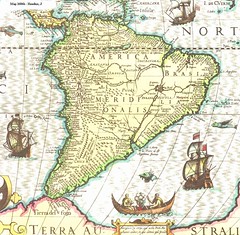
Mapa antiguo de América del Sur; old South America map.
Originally uploaded by thejourney1972 (offline for some days)
What you ought to know:
1. Atlantic & Pacific (A & P)
2. Panama, Central Am.
3. Colombia
4. Venezuela
5. Ecuador
6. Peru
7. Brazil (Brasil)
8. Amazon R.
9. Andes Mts.
10. Chile
11. Argentina
12. Buenos Aires, Argentina
13. Sao Paulo, Brazil
14. Rio de Janeiro, Br.
15. Caribbean Sea
16. Cape Horn / Tierra del Fuego
17. Drake Passage or Strait of Magellan
Cape Horn is widely considered to be the most southerly point of South America, and marks the northern boundary of the Drake Passage; for many years it was a major milestone on the clipper route, by which sailing ships carried trade around the world. However, the waters around the cape are particularly hazardous, owing to strong winds, large waves, strong currents and icebergs; these dangers have made it notorious as a sailors' graveyard, says Wikipedia.
The need for ships to round the Cape Horn was greatly reduced by the opening of the Panama Canal in 1914. However, sailing around the Horn is widely regarded as one of the major challenges in yachting.
Rio de Janeiro, Sao Paulo and Brazil: this week's open notes and map quizzes
1) Thursday's reading comprehension quiz is on web site notes on Brazil.
2) The map quiz is on the entire continent of South America - 12 major items as outlined last week.
3) Please pursue the reading of your 1st semester social studies book.
4) Also, enact your social studies project team and develop the question-problem-hypothesis-literature review social studies project.
2) The map quiz is on the entire continent of South America - 12 major items as outlined last week.
3) Please pursue the reading of your 1st semester social studies book.
4) Also, enact your social studies project team and develop the question-problem-hypothesis-literature review social studies project.
Subscribe to:
Posts (Atom)
